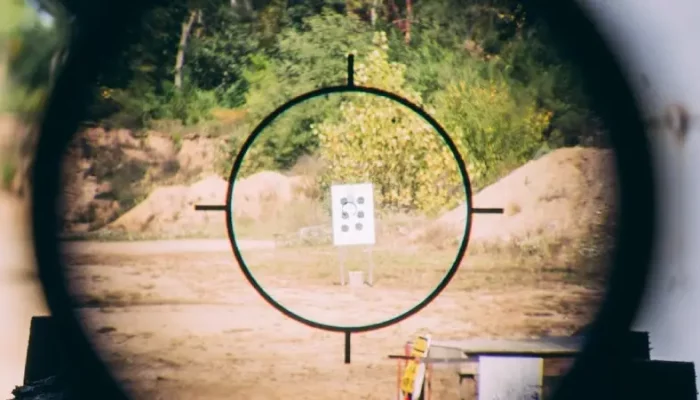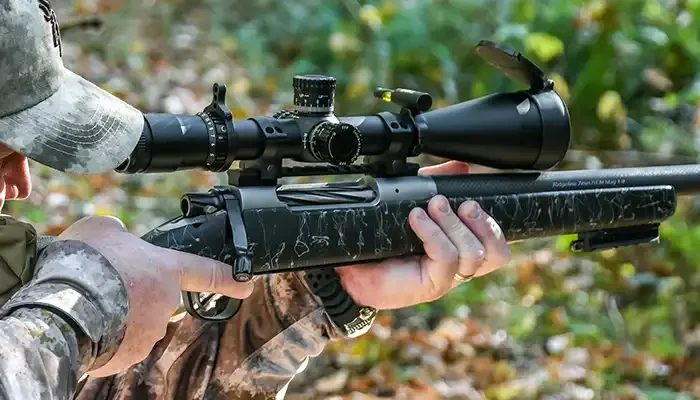Any of you (!) science students remember operating on a frog? Today we are going to do something similar. No, we are not operating on a frog but we are going to teach you the anatomy of a crossbow.
So, you can understand better about this magnificent creation for hunting. What are we waiting for? Let’s jump straight into the guide.
Anatomy Of A Crossbow

Image By Bowhunter-ed
Crossbows are very famous among bowhunters. Its short learning curve and accuracy are one of the main reasons. Operating a crossbow can seem hard but once you get the hang of it you will enjoy it very much.
Stirrup
A metal frame which is located in the front of the crossbow. You put your feet inside it while you cock your arrow.
Stock
A lot of rifles also use different stock for better usage. Sometimes companies allow you to use your stock. That’s because some people are more comfortable using their previous stocks.
A stock is considered the body of a crossbow. Every other part is attached to the stock of the crossbow. The front side of the crossbow where you grip it is called foregrip.
The rear of the stock which rests in your shoulder is called buttstock. Buttstock might be changeable depending on the model of the crossbow.
Limbs
Just like any humans have limbs a crossbow also has limbs. They are not as flexible as your hands but they are flexible. Their job is to flex and store the energy to propel the bolt.
For example, recurve crossbows have curved limbs. Compound bows have something called cams at the end of the limb.
Bowstring
This is one of the primary components that make the bow whole. You can’t have a crossbow without stock and you can’t operate a crossbow without a bowstring.
Just like a compound bow you pull the bowstring and cock your arrow in place. When it’s placed correctly the locking mechanism going to be activated and keep the bolt locked till you pull the trigger.
Just like a bow when you release the bowstring the arrow flies the same mechanism is also applied here, when you pull the trigger the lock mechanism unlocks and releases the bowstring.
Rail
Different kinds of bows have different kinds of rails. You guys might be aware of the rails in a rifle. Where you place your scope and other accessories. In a crossbow, there is also a rail sometimes 2 rails available.
The main rail is where you place your scope and other accessories. Sometimes the company gives a secondary rail near the top end of the scope to attach small accessories. You need to buy a scope that your crossbow rail supports. So always keep that in mind.
Trigger
The trigger mechanism is explained in the bowstring part, if you missed that read that part again. But to put it in simple words a crossbow has a trigger mechanism to release the cocked bolt. The trigger also acts as a safety so you don’t accidentally fire the locked bolt.
Compound bowstrings are pulled manually and released manually to shoot the arrow. Don’t get me wrong you also need to pull the bowstring of a crossbow to cock the bolt but you don’t need to hold the bowstring while you aim (which you need to do while using a bow).
Conclusion
In that regard, the trigger mechanism is far better than manual shooting. It’s almost like you are using a gun. These are the key (parts!) Anatomy of a crossbow.
There are other accessories available that people might consider a crucial part of a crossbow. For example, scopes are mandatory to aim with a crossbow.
Whether it’s a red dot or a variable zoom crossbow scope, it’s necessary. You can also say the same for a quiver. But after all, they are accessories. They make the crossbow full true but they don’t make the crossbow.
Hi, I’m Brent Hansford. A writer turned hunter & now sharing my love for the sport through writing. As I practically breathe weapons, I firmly believe I’m capable of providing you with new knowledge about firearms and hunting. My mission is to help more people get better at hunting & master the weapons. Let me help with unleashing the beast within you!



